The decision to purchase a stair lift can significantly improve the quality of life. First, however, high investments are necessary. Stairlifts are made of high-quality materials, have a complex design and require professional installation. Many people are therefore dependent on a cost assumption by the care insurance or the statutory health insurance when buying a stair lift..
Favorable stairlifts are already available from around 3,000 €. In some cases, however, prices can rise to over 15,000 €. For the individual, this is certainly a very high investment that must be made in order to sustainably improve the quality of life. However, buyers of a stair lift are not always in a position to make this investment on their own. They therefore need a cost absorption by the care insurance or the statutory health insurance.
Cost absorption by the statutory health insurance
Since stairlifts are not considered medical aids, they are not paid by the health insurance. Also subsidies for the acquisition of a stairlift do not exist on the part of the health insurance companies. The basis for this attitude is a decision of the Federal Social Court (B 3 KR 14/97). At that time it was decided that stair lifts are not aids, because they usually represent a structural change or improvement.
 PhotosSource: tk.de | Press image from Techniker Krankenkasse
PhotosSource: tk.de | Press image from Techniker KrankenkasseIf one moves for example, the stair lift cannot be used further. The aid is thus no longer usable as such. According to the decision of the Federal Social Court, only medical aids that can be carried by the patient are generally considered aids. Only these must then also be paid for or subsidized by the health insurance funds.
Cost absorption by the care insurance
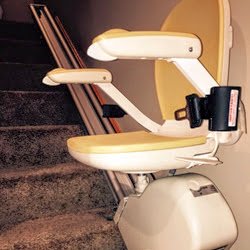
The nursing insurance can assume part of the costs incurred when installing a stairlift. The legal justification for this is that a grant may be provided to improve the living environment. However, there is usually no complete assumption of costs by the care insurance fund. The care insurances pay therefore usually always only a portion as subsidy for the purchase of a stair lift.
The remaining amount must be raised by the buyer himself or, if necessary, financed, if no other cost bearer for the assumption of the costs of the stairlift purchase comes into question. Depending on whether an elaborate stairlift is needed or a simple model seems sufficient, the costs not covered by care insurance can amount to several hundred or even several thousand €.
Prerequisites for the assumption of costs
Since the statutory health insurance companies do not cover the costs of the stairlift, the care insurance company is usually the first point of contact when it comes to the assumption of costs. But even here, certain conditions are necessary. The care insurance only grants the subsidy if it is a measure that improves the patient’s living environment. This must be justified in an application.
The application itself can be made informally. The cost estimate of a stairlift provider can already be enclosed. Important: The care insurance company only pays if a nursing care degree exists. At the time of the application, the applicant must have at least a care degree of one. Only then is it possible for the costs to be covered by the care insurance fund. As part of the application process, there is usually a visit from the medical service, which is to check the need to purchase a stair lift.
How much does the care class take over?
It is specified that the maximum subsidy for the installation of a stairlift on the part of the care insurance fund may not exceed the amount of 4,000 €. The remaining sum, which is incurred in the purchase or installation of a stairlift, the applicant must raise himself.
Application to the nursing or health insurance
In order to receive a cost subsidy for the installation of a stair lift, the affected person must submit an application in writing to their care or health insurance company. Below is a sample cover letter that you can use to submit an application to your care insurance company.
Application for measure to improve the individual living environment.
Dear Sir or Madam,
due to my health condition and the classification in the care degree XXX, I hereby apply according to §40 Abs. 4 SGB XI a subsidy for the installation of a stair lift in the context of the measures for the improvement of the individual living environment. Due to my medical condition it is no longer possible for me to safely climb stairs under my own power. For these reasons, and because my family members cannot permanently support me when climbing stairs, I am absolutely dependent on a mobility aid in the form of a stair lift.
Enclosed with this letter you will find a cost estimate from the company XXX for the purchase and installation of a stair lift. Due to the urgency, I ask for the fastest possible processing of my request. I thank you in advance and remain with kind regards
Your signature.
Sample application to download – Application for a living environment improvement grant.
Other cost units for a cost assumption
Long-term care insurance and statutory health insurance are not the only cost units that are eligible for cost coverage when purchasing a stair lift. If, for example, there was an accident at work, the stairlift can be covered by the Employer’s Liability Insurance Association. In case of an accident caused by someone else, the liability insurance of the other party may cover the costs.
In principle, however, other cost bearers, such as social security and pension offices are also possible. A extensive consultation in advance of the stairlift purchase should cover these options. As a rule, stairlift providers are appropriately trained and have experience as far as cost absorption is concerned.
Funding by the Reconstruction Loan Corporation (KfW)
The KfW offers special loans for the purchase of a stairlift. Therefore, it can help with the financing of the stairlift. KfW’s loans are particularly low interest. The benefits of KfW can generally be combined with other subsidies, for example, from the care insurance fund.
If other cost units do not cover the costs incurred when purchasing a stair lift, KfW is a good contact. The suppliers of stairlifts can usually help here, also with regard to the corresponding applications. In addition, they usually offer the purchase of a stairlift by installment payment.


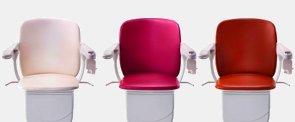
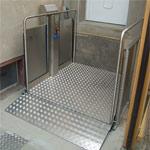
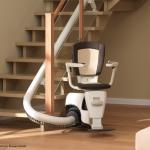
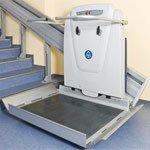
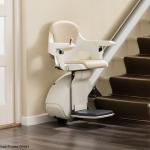
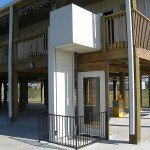
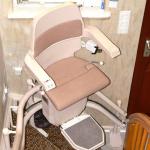
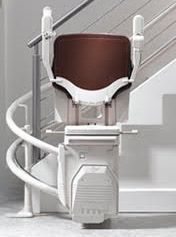
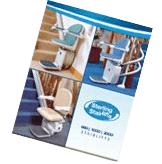
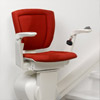
Hello,
“It is stipulated that the maximum subsidy for the installation of a stairlift on the part of the long-term care insurance fund may not exceed the amount of 2,557 euros.”
Does this also apply to used stairlifts?
Is there a difference between private and company purchases?
Sincerely
A.K.